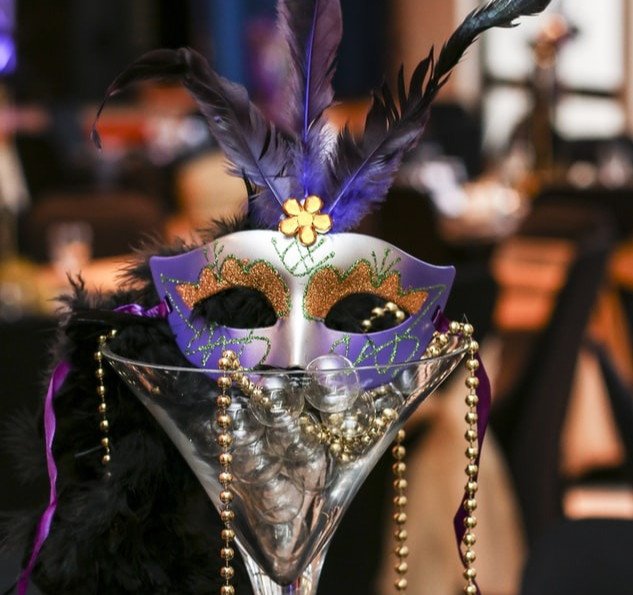2025 KING CAKE SEASON IS OFFICIALLY CLOSED
THANK YOU FOR A GREAT SEASON!
WE WILL SEE YOU AGAIN IN DECEMBER FOR OUR CHRISTMAS KING CAKES!
History of Mardi Gras Colors
When people think about New Orleans, they think about parties, masquerades, and of course, king cake! Mardi Gras, the most famous carnival in New Orleans (and beyond), is perhaps most notable for its historic colors that adorn everything. Even our delicious king cakes feature gold, green, and purple as their primary colors. Sweet glaze, edible glitter, savory sprinkles, and more all decorate king cakes as the historical Mardi Gras colors… but why? There are many rumors that abound, and it seems like everyone has a family story to tell about their origins. However, what’s the true history of Mardi Gras colors?
Apparently, most of the city was mistaken about the history of Mardi Gras colors. While the historic Mardis Gras colors have always been gold, green, and purple ever since the 1892 Rex parades, there have been rumors persisting for over 100 years as to the reasons why. Perhaps the most fanciful origin story is about the visiting Russian Grand Duke Alexei Alexandrovich Romanov who came in 1872; the colors were chosen to honor him. However, that isn’t the whole truth at all.
In fact, the true history of Mardi Gras colors starts with the modern, leading Mardi Gras historian Errol Flynn Laborde who was performing research in preparation for the 125th anniversary of the Rex organization. According to Laborde, while the Mardi Gras colors can indeed be traced back to the first Rex parade held in 1872, there aren’t any newspapers of the time that state the reasons why the colors green, purple, and gold were chosen. Even the King of the Carnival at the time failed to give a reason behind the color selection, and zero reporters of the time pressed the question.
Laborde and his research team decided it was time to zoom out a bit in order to better analyze the colorful conundrum on their hands; they decided to focus on why there are three Mardi Gras colors rather than just one or two. The team came to adopt a working hypothesis that follows the following logic:
1) A King is a leader of a country, and countries must have flags.
2) The tricolor revolutions of the 19th century saw a rise in flags with three colors. France, Germany, Hungary, the Netherlands, and more adopted flags with three solid colors to signify their national “coming together” in recognition of their own cultures.
3) The natural result of designing a contemporary flag in the 19th century would be to select three colors that other nations are not currently using and apply meaning to the colors that brings a vast many people together.
Purple, green, and gold became the historic colors of Mardi Gras by drawing inspiration from the rules of heraldry. In heraldry, there needs to be both metals and nonmetals represented in order to give prestige to the person bearing the colors. Gold was therefore an obvious choice of metal; it historically represents both a kingly status and its place as the highest-value metal of the time. Purple also represents royalty, having been the rarest and most valuable dye for centuries. In fact, legend says Roman emperors were born in rooms painted with deep purple to represent their coming into wealth and power, which is also the origin of the phrase “born in the purple.” Laborde proposes that the final color choice was between green and black, with green being the final choice so as to represent the plentiful hopes that Mardi Gras inspires within the population. It was also a growing color symbol of wealth in the late 19th century. This combination of colors representing literal and figurative richness additionally matches the nature of Mardi Gras’ origin: an attempt to bring business and tourism dollars to New Orleans.
The next time you’re enjoying a thick slice of your favorite Randazzo king cake and sharing it with friends, you can regale them with the true history of Mardi Gras colors. Well, at least while your mouth is empty!
